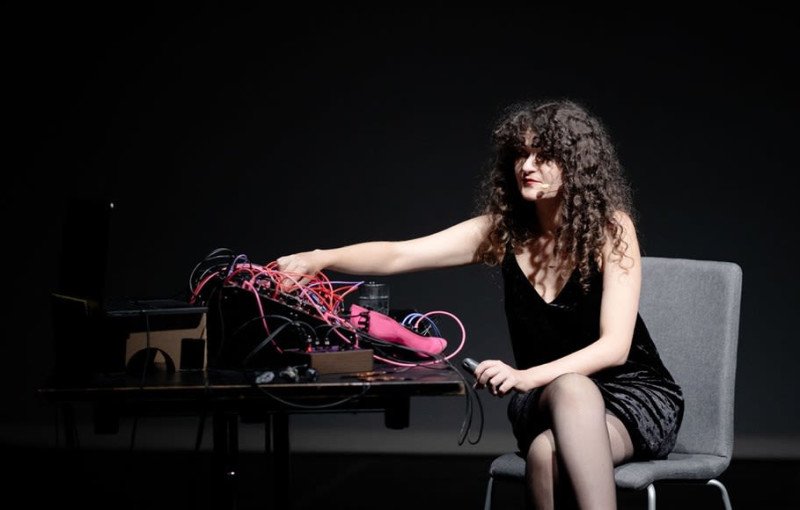
ALTHOUGH IOANA VREME Moser’s experiments in sound art produce music like you’ve never heard before, they’re also a fine illustration of the adage that everything old is new again.
Behind the Romanian-born, Berlin-based interdisciplinary artist’s wildly imaginative pieces—which can involve living trees, wired-up yet very fashionable shoes, and stroboscopic animation—is a solid if self-taught understanding of basic physics, coupled to a passion for early radio and telecommunications technology.
Of course, those are not the only ingredients in Vreme Moser’s mix. Before learning to use a soldering iron, she’d already become an accomplished visual artist and mastered the demanding art of classical ballet. But music, she explains, has offered her a rules-free environment for exploration, and she’s happier in sound than in other, more formal disciplines.
“In Romania, like in during the Soviet times, we had this rigid education in the arts, and this went on until the 1990s and the 2000s,” she explains in a Zoom conversation from her Berlin studio. “So I had a kind of classical training of what drawing means, which took away all the fun, basically. I had to draw a lot of portraits, very dramatic images, and there were a lot of rules. Which, of course, is fantastic for learning visual composition, but then I felt like I could not pursue this as a career any more, because I’d just lost the pleasure of doing it. And so when I approached sound and music it was really from this idea of ‘I’m not going to learn notation. I just want to play with it and have this freedom, because I’d already had this torture of having an academic training.’”
Perhaps because she has no formal education in composition, no virtuosity on the piano or violin, and no immersion in the musical codes of Johann Sebastian Bach or Ludwig van Beethoven, Vreme Moser’s approach is remarkably unfettered by preconceived notions about the nature of music, or by the usual rules of performance. Roughly speaking, much of her work falls into the category of “industrial” noise art, but it embodies a sense of play that’s rare in that grimly provocative world. And when Vancouver New Music hosts her this week, as part of its ongoing Parallel series, she plans to extend the joy of spontaneity to a select group of locals, who’ll then join her onstage. Alas, her Sizzling Semiconductors workshop quickly filled up, but she’s happy to share what participants will learn, and how.
“Basically I started this workshop series because I do a lot of work with electronics, and each time I make a new work I kind of have to learn the technology,” she explains. “And I thought it was a little bit of a waste to just make an artwork and not share what I learned. In these workshops, I’m really interested to show people the core of electronics, or how electronics actually work. To do that, I thought ‘Okay, what would be really interesting would be to actually look at the components, the electronic components—and especially semiconductors.’ You can make capacitors, you can kind of grasp resistors, but semiconductors are really hard to hand-make. They’re all produced in mass industry and so on. So my topic for the research was kind of ‘How can I teach people to make their own kind of homemade transistors?’ And then ‘How can we make an instrument with that?’
